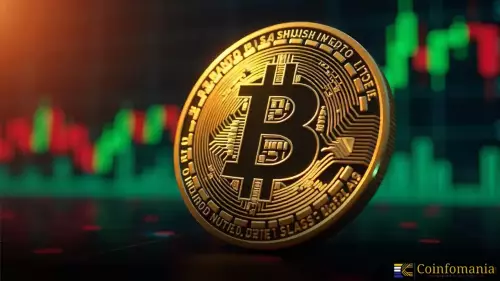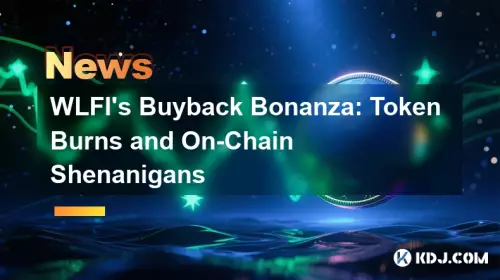 |
|
 |
|
 |
|
 |
|
 |
|
 |
|
 |
|
 |
|
 |
|
 |
|
 |
|
 |
|
 |
|
 |
|
 |
|
Cryptocurrency News Articles
SWIFT, Ethereum, and Stablecoins: A New Era of Financial Integration?
Sep 27, 2025 at 01:05 am
Exploring the intersection of SWIFT, Ethereum, and stablecoins in reshaping global finance. From pilot programs to potential disruptions, get the latest insights.

Yo, what's up, finance heads? The world of money is changing faster than a New York minute, and at the heart of it all are SWIFT, Ethereum, and stablecoins. Let's dive into how these three are shaking up the financial landscape.
SWIFT Goes On-Chain: A Bold Move
SWIFT, the old-school messaging system that connects over 11,000 financial institutions globally, is stepping into the blockchain game. Word on the street is they're testing on-chain payments and messaging using Ethereum's Layer 2 network, Linea. That's right, SWIFT and Ethereum, hanging out! This ain't your grandpa's finance anymore.
The project involves a bunch of major banks, including BNP Paribas and BNY Mellon, and they're even playing around with a stablecoin-like token for settlements. The goal? Streamlining international settlements and cutting out the middleman. It's like taking the subway instead of a yellow cab – faster and cheaper.
Ethereum's Role: The Blockchain Backbone
Ethereum is becoming the go-to platform for financial experimentation. Linea, built by Consensys, is designed to make Ethereum more scalable and cost-efficient through zk-rollups. This makes it a sweet spot for traditional finance to dip its toes into the decentralized world. By leveraging Ethereum’s security while cutting down settlement costs, Linea is positioning itself as the bridge between Wall Street and the blockchain.
Stablecoins Take Center Stage
Stablecoins are no longer just a crypto niche; they're hitting the mainstream. With a market exceeding $230 billion, led by big players like Tether (USDT) and Circle (USDC), these dollar-pegged tokens are changing how we think about payments. Transactions are instant, fees are minimal, and big tech companies like Apple, Airbnb, Uber, and X are all eyeing stablecoin integration. Google even announced AI-focused payment framework supporting stablecoins alongside card networks.
But it's not all sunshine and rainbows. Some analysts worry that widespread stablecoin use could drain deposits from traditional banks. The Bank for International Settlements notes that stablecoins already account for a chunk of U.S. deposits. It's a financial revolution, but there could be growing pains.
Ripple vs. SWIFT: Convergence or Competition?
There's been chatter about Ripple and SWIFT – are they destined to compete or converge? While Ripple is making moves in regulated finance, including launching its USD-backed stablecoin, RLUSD, there's no public tie-up with SWIFT yet. However, a plausible path for integration would be message-level interoperability. SWIFT could carry standardized payment instructions that reference on-chain settlement on networks like the XRP Ledger. Banks could keep using their SWIFT interfaces while optionally settling some legs in stablecoins where regulation and liquidity allow.
The Trump Card: Stablecoins and Dollar Dominance
Even Eric Trump is bullish on stablecoins, believing they'll help preserve the U.S. dollar's dominance. However, there are concerns about potential conflicts of interest, especially with the Trump family's involvement in stablecoin projects. Despite the controversy, some experts believe that stablecoins could broaden the reach of the dollar globally, making it a more dominant reserve currency. It's a high-stakes game, and everyone's watching to see how it plays out.
Final Thoughts: The Future is Now
So, what's the bottom line? SWIFT, Ethereum, and stablecoins are converging to create a new financial ecosystem. It's a wild ride, with potential disruptions, regulatory hurdles, and game-changing innovations. Keep your eyes peeled, because the future of finance is happening right now, right here in the city that never sleeps. Stay savvy, folks!
Disclaimer:info@kdj.com
The information provided is not trading advice. kdj.com does not assume any responsibility for any investments made based on the information provided in this article. Cryptocurrencies are highly volatile and it is highly recommended that you invest with caution after thorough research!
If you believe that the content used on this website infringes your copyright, please contact us immediately (info@kdj.com) and we will delete it promptly.






























































